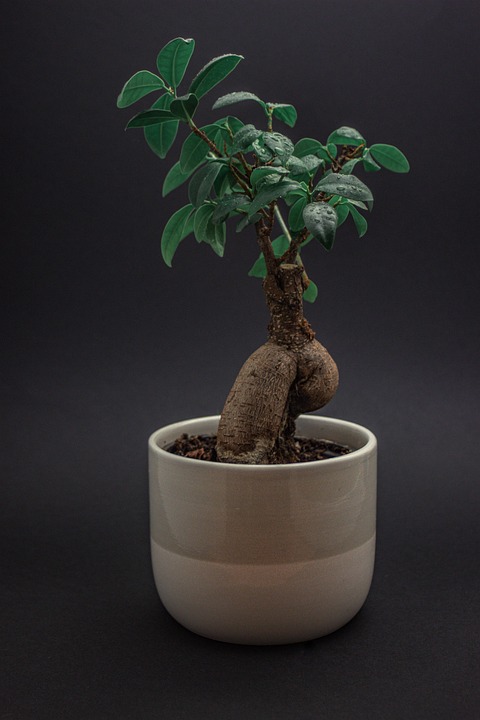Maximizing Your Space: The Ultimate Guide to Indoor Gardening Solutions
Indoor gardening is a great way to bring the beauty and benefits of nature into your home, even if you don’t have a lot of outdoor space. With the right tools and techniques, you can create a lush and thriving indoor garden that will enhance your living space and improve your overall well-being. In this guide, we will explore some of the best indoor gardening solutions to help you maximize your space and create a stunning indoor oasis.
Benefits of Indoor Gardening
Before we dive into the various indoor gardening solutions, let’s take a moment to consider the many benefits of bringing plants into your home. Indoor gardening not only adds beauty and color to your living space, but it also has numerous health benefits. Plants can help purify the air, reduce stress, and improve your mood. They can also boost creativity, productivity, and focus. Additionally, indoor gardening can be a fun and rewarding hobby that allows you to connect with nature and learn new skills.
Choosing the Right Plants
When it comes to indoor gardening, choosing the right plants is crucial. Not all plants thrive indoors, so it’s important to select varieties that are well-suited to the conditions in your home. Some popular indoor plants include succulents, ferns, orchids, and spider plants. These plants are relatively easy to care for and can thrive in a variety of indoor environments. It’s also important to consider the amount of light, humidity, and temperature in your home when selecting plants, as these factors can greatly impact their growth and health.
Maximizing Space with Vertical Gardens
If you’re short on space but still want to create a lush indoor garden, vertical gardens are a great solution. Vertical gardens allow you to grow plants upwards, rather than outwards, maximizing your space and adding a touch of greenery to your walls. There are many different types of vertical garden systems available, from simple hanging planters to elaborate living walls. You can even create your own vertical garden using repurposed materials like pallets or shoe organizers. Vertical gardens are not only space-saving, but they also add a unique and eye-catching element to your home decor.
Utilizing Indoor Planters and Pots
Another way to maximize your space and create a thriving indoor garden is to use indoor planters and pots strategically. Choose planters that are the right size and shape for your plants, and consider using hanging planters or wall-mounted pots to free up floor space. You can also use tiered plant stands or shelves to display multiple plants in a small area. Additionally, consider using self-watering planters or pots with drainage holes to make watering and caring for your plants easier. With the right planters and pots, you can create a beautiful and functional indoor garden that fits seamlessly into your space.
Creating a Miniature Indoor Garden
If you have limited space but still want to enjoy the benefits of indoor gardening, consider creating a miniature indoor garden. Miniature gardens, also known as terrariums or fairy gardens, are small-scale gardens that can fit on a tabletop or windowsill. These tiny gardens can be filled with a variety of plants, mosses, and miniatures to create a whimsical and enchanting display. Miniature gardens are easy to care for and can be a fun and creative way to bring a touch of nature into your home. You can also customize your miniature garden to reflect your personal style and interests.
Optimizing Light and Temperature
One of the most important factors in successful indoor gardening is providing the right amount of light and temperature for your plants. Most indoor plants require bright, indirect light to thrive, so it’s important to place them near a window or under a grow light. You can also rotate your plants regularly to ensure they receive even light exposure. Additionally, maintain a consistent temperature in your home, as extreme fluctuations can stress your plants. Most indoor plants prefer temperatures between 65-75 degrees Fahrenheit during the day and slightly cooler temperatures at night. By optimizing light and temperature, you can help your plants grow and flourish indoors.
Caring for Your Indoor Garden
Finally, caring for your indoor garden is essential to keeping your plants healthy and thriving. Regular watering, pruning, and fertilizing are all important tasks to ensure your plants remain happy and vibrant. Water your plants when the top inch of soil is dry, and be sure to use room-temperature water to avoid shocking your plants. Prune your plants regularly to remove dead or yellowing leaves and promote new growth. Additionally, fertilize your plants every 4-6 weeks with a balanced plant food to provide essential nutrients. By staying on top of these care tasks, you can enjoy a beautiful and thriving indoor garden year-round.
Conclusion
Indoor gardening is a wonderful way to bring the beauty and benefits of nature into your home, no matter how much space you have. By choosing the right plants, utilizing space-saving solutions like vertical gardens and indoor planters, and optimizing light and temperature, you can create a stunning indoor garden that enhances your living space and improves your well-being. With a little time and effort, you can enjoy the rewards of indoor gardening and create a peaceful and green oasis in your home.
Whether you’re a seasoned gardener or a beginner looking to try your hand at indoor gardening, there are endless possibilities for creating a beautiful and thriving indoor garden. By following the tips and techniques outlined in this guide, you can maximize your space, care for your plants, and enjoy the many benefits of indoor gardening. So roll up your sleeves, get your hands dirty, and start creating your own indoor oasis today!





















































